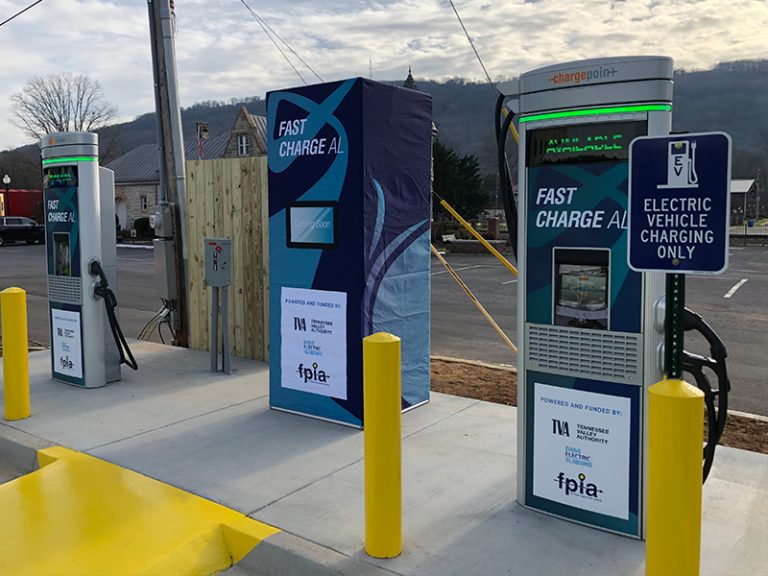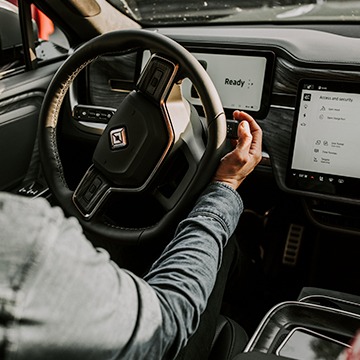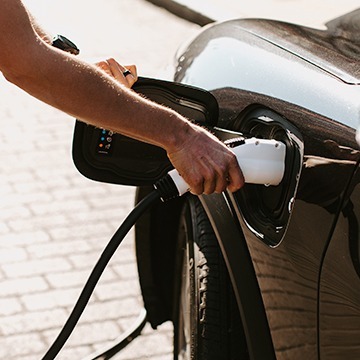Fill it up. Charge your EV with low-cost, clean electricity.
The region’s electricity is nearly 60% carbon-free and getting cleaner. That means our locally produced, low-cost electricity is a great way to get your EV rolling. TVA EnergyRight® is here to help with information you need to know about charging your EV at home, at work or on the road.


Power up on the cheap, while you sleep.
A whopping 80% of EV charging happens at home.* It’s convenient and cost-effective thanks to TVA’s low electricity rates. All EVs come with a Level 1 charging cable that you can plug into an ordinary power outlet. Most EV owners recommend having a professional install a dedicated Level 2 charger.

Know your EV charging levels.
Just like you choose your octane at the gas pump, you choose your juice at the plug! There are three ways to charge your EV: Level 1 (120-volt), Level 2 (240-volt) and DC fast charging.
Level 1: These chargers plug into a regular 120-volt home outlet, just like the one you use to charge your phone or power your TV.
Level 2: Professionally installed 240-volt chargers can fully charge an empty battery-only EV (BEV) at home or on the road in 4-10 hours.
Fast Charging: Direct current (DC) public chargers are intended for quick stops on long road trips and can fill up an empty battery in 20-60 minutes.

Going on a road trip?
Meet the Fast Charge Network. We’re collaborating with state agencies, local power companies and third-party charging developers to place fast charging stations at least every 50 miles along major travel corridors in the seven-state region.

Start rolling without worrying.
Find a charger that’s on your way (or right around the corner) with our interactive mapping tool. From Nashville to Naples, Huntsville to Bowling Green – and everywhere in between – we’ll get you charged up.
We’re driving change, boosting the economy and putting the brakes on emissions.

Driving EVolution blog series.

Take an EV road trip!

Regional EVents.
Explore more resources.

Compare vehicles

Fueling electric transportation

Explore EV models
*SOURCE: energystar.gov


